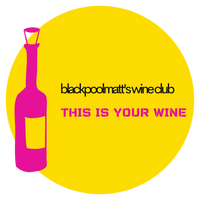what’s in a label?
There are so many times a customer has guiltily confessed to me that they buy wine because of the label rather than because of their knowledge and appreciation of the wine itself. To which I reply, me too, and all the time.
There’s plenty of bad wine that’s well-packaged and good wine that’s badly packaged, so don’t read too much into the quality of a label. At the same time, it’s so important for a producer to come up with packaging that stands out on the shelf from hundreds of competitors.
The Australians underlined the importance of a label in the 1990s with “critter labels”—and, yes, I’ve bought plenty of wine because there’s a cute animal on the front of the bottle.
The craft beer and spirits movements have demonstrated how imaginative, humorous, and distinctive labels grab customers’ attention. In contrast, trawling along the selection of wines in a supermarket just reveals mostly indistinguishable labels which are impossible to differentiate. Thankfully, smaller producers realize that a great label can push them ahead of the competition.
An effective label should be eye-catching but also reflective of the wine, in some way conveying its essence and character to the potential customer. A more traditional producer may choose a more traditional design, but it should still stand out. An edgy, experimental wine should have a like-minded label. And if a label is boring and staid, well it’s not our fault if we assume the wine is also boring and staid.
It many not be universally the case, but if a producer has put the effort in to create an attractive, stand-out label, then they’ve done the same with the wine. I’ve discovered so many amazing wines simply because the label was so appealing. Don’t judge a book by its cover, but do let the cover draw you in to find out what’s inside.
some favorite recent labels

Domaine Ostertag "L'exutoire SVV3" Sylvaner Alsace 2018
All of André Ostertag's labels are striking, designed by his partner Christine Colin. Like the wines, they're dynamic but not in your face. Ostertag is one of the most revolutionary winemakers in Alsace, farming biodynamically and never resting still. A fastidious attention to detail and a long-term vision are all absolutely reflected in the labels.
Mirco Mariotta "Smarazen" Emilio-Romagna NV
"Smarazen" is two things: in this case, it's a pét-nat from sandy soils near the Adriatic Sea in eastern Italy; it's also a local card game. The cards are reflected in the label's colorful modernist label, which immediately catches the eye and sums up the immediate, approachable, stylish character of the wine itself.
Sfera Vino Bianco Italy NV
Another Italian wine which is again quite unusual: it's non-vintage and the bottle is a liter in size. It's from Piemonte, and the grape is Cortese, most commonly associated with Gavi. It's another expressive label, with the Alps in the background and an arch symbolizing the Baroque gateways and galleries of the great city of Turin.
These three wines—among many others—make you want to immediately open them and find out what's inside. And that's the purpose of a label, which some producers sadly miss. Of course, even more important is what's inside, and these three wines all deliver on their packaging.
